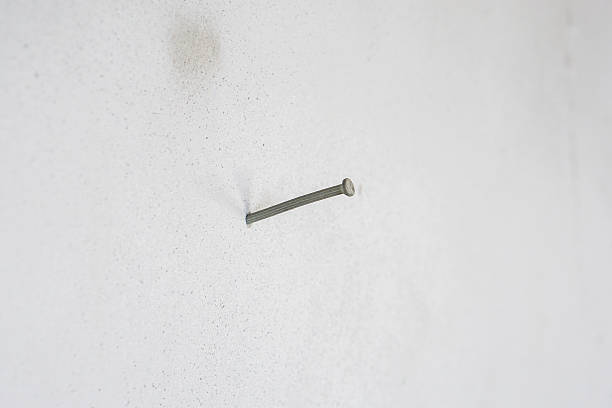
Stucco is a staple exterior material in Gilbert, Arizona, offering a clean finish, superior durability, and heat resistance. But when it comes to home improvement or decorative projects, many homeowners wonder—can you safely nail into stucco without damaging it?
The short answer is yes, you can nail into stucco. However, it’s essential to use the right tools and approach to avoid cracking, moisture problems, or reduced wall integrity. Whether you’re hanging holiday lights or mounting hardware, here’s how to do it the right way.
Key Takeaways
You can nail into stucco, but using the correct type of nail and tools is crucial.
Improper techniques can lead to chipping, cracks, and long-term water damage.
Some projects are better suited to alternatives like stucco anchors or masonry screws.
Gilbert’s dry, sun-exposed climate can affect how well nails hold over time.
Understanding Stucco’s Structure
Before grabbing a hammer, it helps to know what you’re working with. Stucco is typically applied in layers over a wood or metal lath. Depending on the type, you might have:
Traditional three-coat stucco: A thicker, cement-based system (up to 7/8 inch thick).
One-coat stucco: Thinner and more brittle.
EIFS (Exterior Insulation and Finish System): Synthetic and foam-based, not suitable for direct nailing.
Because of its density and risk of cracking, standard nails won’t easily penetrate stucco—and even if they do, they won’t hold for long.
Best Practices for Nailing Into Stucco
1. Use Masonry Nails or Stucco Anchors
Masonry nails are hardened to go through cement-based materials without breaking. Better yet, use stucco anchors or masonry screws that expand inside the wall for better grip. They’re ideal for hanging permanent fixtures like light fixtures, address numbers, or hose reels.
2. Pre-Drill a Pilot Hole
Using a masonry bit, drill a small pilot hole before inserting the nail. This reduces stress on the surface and prevents cracking or chipping. Go slow and steady to maintain control.
3. Avoid Hammering Directly Into Stucco
Hammering a nail directly into stucco can easily cause surface damage or internal fractures. If you must use nails without pre-drilling (for lightweight, temporary decor), choose areas far from edges or corners to reduce pressure points.
4. Seal Around the Hole
Gilbert experiences dust and occasional monsoon moisture. After inserting the nail, seal around it with silicone caulk to prevent water infiltration that could lead to mold or internal wall damage—especially in homes with older or previously repaired stucco. For help assessing existing conditions, Stucco Contractors Arizona can evaluate and patch any trouble spots.
When to Consider Alternatives
If you’re looking to hang something heavy—like a trellis, large sign, or metal bracket—nails may not cut it. Use:
Masonry screws or Tapcon anchors
Wall plugs and shield anchors
Adhesive hooks (for temporary decorations)
For homes in Glendale or Gilbert, many professionals recommend combining fasteners with adhesives to reduce stress on the wall finish while maintaining hold strength in Arizona’s hot, dry climate.
Repairing Nail Damage
If a nail does chip or crack the stucco, act quickly to patch it. Moisture can easily seep into small openings, expanding damage over time. Use stucco patch compound or contact Stucco Contractors Arizona to reseal and match the existing texture seamlessly.
Make Your Projects Stucco-Safe in Gilbert
With the right preparation, tools, and techniques, you can absolutely nail into stucco without harming your Gilbert home’s exterior. Whether you’re sprucing up for the season or making practical upgrades, follow these best practices to avoid unnecessary repairs.
Need help patching, mounting, or restoring stucco? Reach out to the trusted team at Stucco Contractors Arizona for expert services tailored to Gilbert’s unique climate and construction styles.
